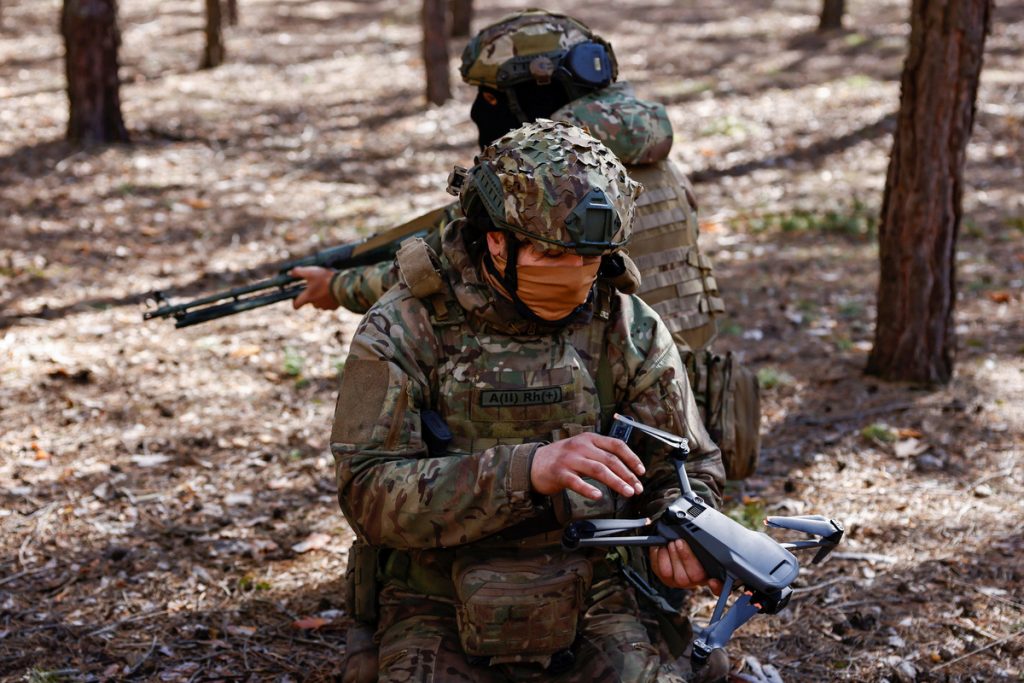Game-changers: Implications of the Russo-Ukraine war for the future of ground warfare
FORWARD DEFENSE
ISSUE BRIEF
What does the record of combat in the year since Russia began its full-scale invasion of Ukraine herald about the future character of ground war? Defense analysts are split on whether the conflict manifests transformative change or merely reinforces the verities of ground combat. On the one hand, the bulk of each side’s formations are armed with decades-old equipment and trained in Soviet-era tactics. However, both forces are adapting, and the Ukrainian military is demonstrating an impressive propensity to improvise and innovate. In particular, Russia was not prepared for Ukraine’s convergence of new capabilities in command and control, persistent surveillance, and massed, precision fires which are changing the game of ground warfare.
Want to learn more? Watch the launch event.
Verities of ground combat
The Russo-Ukraine war has reinforced important continuities in military operations. These include the importance of preparation, logistics, and industrial capacity which are the core components needed to sustain a capable force. The war has also driven home the importance of both massed and precision fires. Cannon artillery has played a central role in the war, firing about two million rounds to date. Ukrainian forces have also adeptly employed long-range High Mobility Artillery Rocket Systems (HIMARS) to dramatically damage Russian ammunition resupply. Artillery fires have been, and will continue to be, crucial for supporting maneuver, degrading adversary communications and logistical capabilities, and destroying or suppressing adversary artillery. Consequently, the industrial capacity to produce the necessary ammunition, maintenance equipment, and systems to replace losses, will remain a defining feature of military preparedness.
Game-changers
The Ukrainian military has combined existing and new technologies to develop three capabilities that are dramatically altering the dynamics on the battlefield. First, Ukraine has developed truly connected, high-speed command and control. Second, Ukraine has access to near-persistent surveillance of the battlespace. Third, Ukraine’s skilled use of precision artillery, drones, and loitering munitions demonstrated how their smaller, lighter forces could defeat Russia’s offensive.
Recommendations
- Recognize that these game-changing capabilities are giving new and powerful advantages to defenders in ground combat.
- Structure and organize forces to operate in an environment of ubiquitous surveillance.
- Prepare for ground combat in which large numbers of “semiautonomous” loitering munitions dominate the battlefield.
- Recognize ground-based missiles and drones as key instruments of air power.
- Engage the commercial sector as a key source of technology and innovation.
Generously sponsored by



About the author

Distinguished Research Fellow, Institute for National Strategic Studies, National Defense University
Dr. Thomas X. Hammes joined Institute for National Strategic Studies in June 2009. His areas of expertise include future conflict, the changing character of war, military strategy, operational concepts, and insurgency. Dr. Hammes earned a Bachelor of Science from the Naval Academy in 1975 and holds a Masters of Historical Research and a Doctorate in Modern History from Oxford University. He is a Distinguished Graduate from the Canadian National Defence College. He has published three books: Deglobalization and International Security; The Sling and the Stone: On War in the 21st Century; and The 1st Provisional Marine Brigade, the Corps’ Ethos, and the Korean War. He has also published over 160 articles. His publications have been used widely in staff and defense college curricula in the US, UK, Canada, Australia, and Singapore. Dr. Hammes has lectured extensively at leading academic and military institutions in the United States and abroad. Prior to his retirement from active duty, Dr. Hammes served 30 years in the Marine Corps to include command of an intelligence battalion, an infantry battalion and the Chemical Biological Response Force. He participated in military operations in Somalia and Iraq and trained insurgents in various locations.

Forward Defense, housed within the Scowcroft Center for Strategy and Security, generates ideas and connects stakeholders in the defense ecosystem to promote an enduring military advantage for the United States, its allies, and partners. Our work identifies the defense strategies, capabilities, and resources the United States needs to deter and, if necessary, prevail in future conflict.
Image: A Ukrainian serviceman, call sign "Black", 34, of the 110th Battalion, handles a drone during an exercise, as Russia's attack on Ukraine continues, in an undisclosed location near the frontline town of Kreminna, Ukraine March 14, 2023. REUTERS/Violeta Santos Moura
